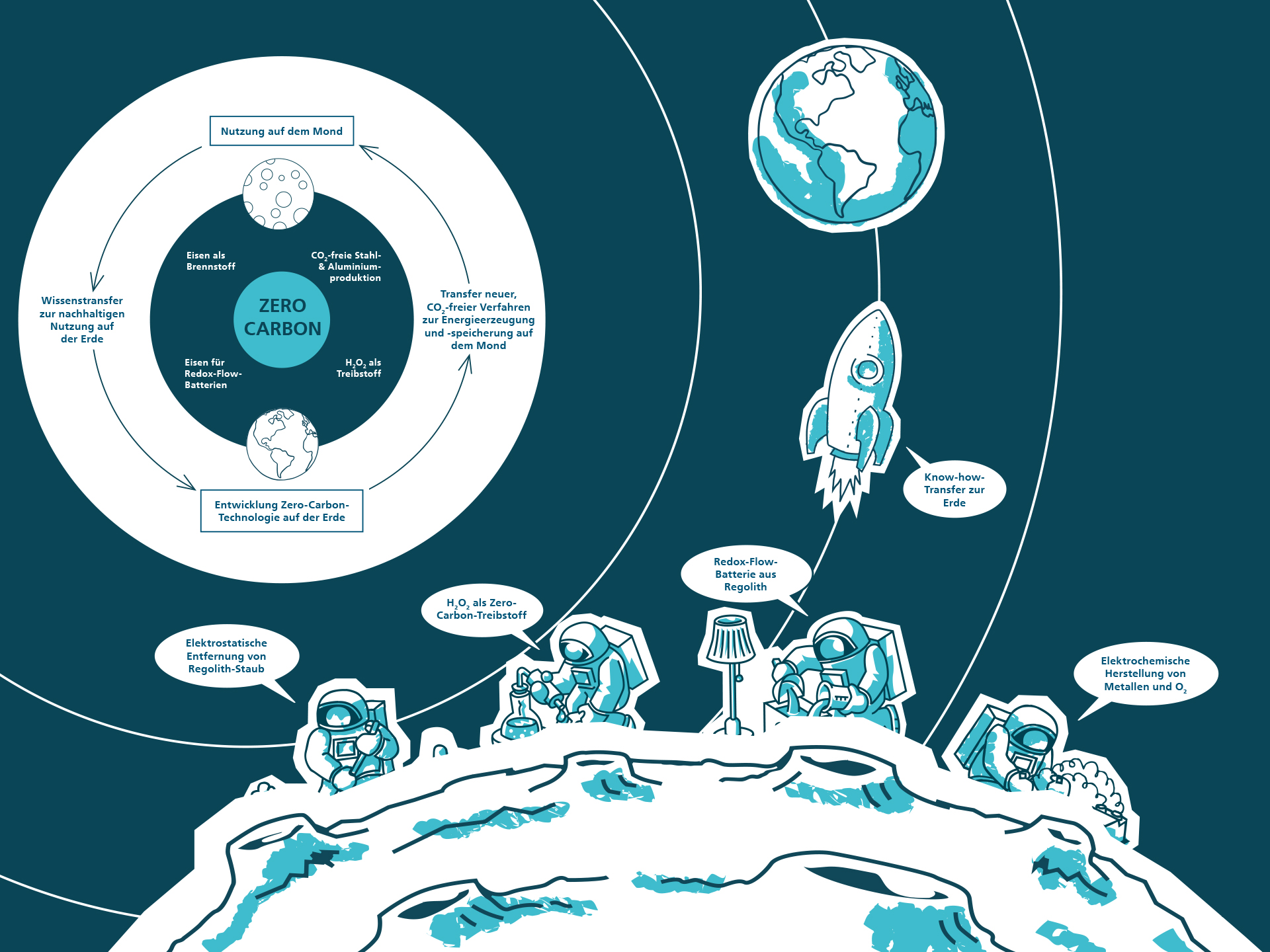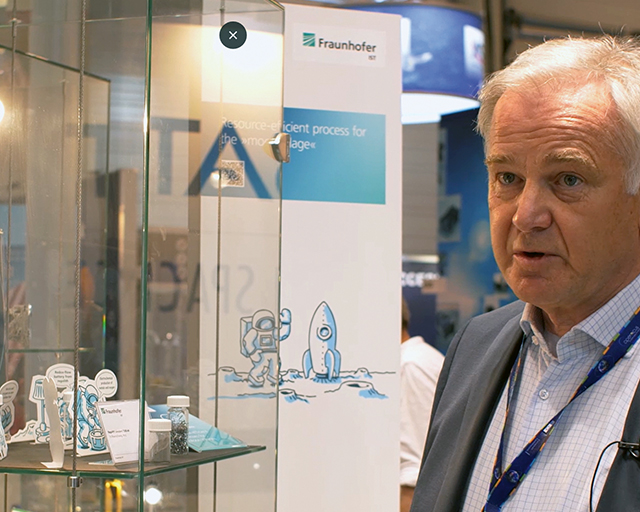Resource extraction on the Moon
Living on the Moon? This may perhaps sound somewhat unrealistic today, but the urbanization of the Moon is one of the future topics in space travel. Limited resources on the Moon, the lack of fossil fuels, and extreme conditions such as very high and very low temperatures and a different day/night rhythm necessitate new ideas for energy supply and for the production of the required components and parts.
The Fraunhofer Institute for Surface Engineering and Thin Films IST is developing new concepts in order to secure the energy supply by means of lunar resources. An interview with Dr. Andreas Dietz, expert in electrochemistry and surface engineering for the astronautics sector at the Fraunhofer IST.
Dr. Dietz, you are intensively involved in the subject of “electrochemistry in astronautics”. What is it about this subject that fascinates you so much?
Well, we want to save the world, and the best place to start is on the Moon. As was the case back in the 1960s and 1970s, people today want to fly to the Moon again. Back then, it was the Apollo mission that had the world on tenterhooks. Today, people are again seriously thinking about putting humans on the Moon, but for a longer period of time. In the “Moon Village” project, we are working on the goal of building an entire village on the Moon. One big challenge, however, is that there is nothing on the Moon: no variety of materials, and, unfortunately, no hardware store where you can shop to your heart’s content. So we have to work with what is available up there. Developing technologies and researching methods that make this possible is an exciting field of work.
Is living on the Moon conceivable in the future?
An important prerequisite for a permanent and sustainable human presence on the Moon is the availability of resources such as pure metals and oxygen in order to create, for example, accommodation, a research station and the necessary infrastructure for astronauts. The so-called lunar regolith, loose rock found on the surface of the Moon, consists of metal oxides such as iron, titanium, aluminum and magnesium. In these oxides, oxygen is present in a tightly bound form and accounts for about 50 percent of the total mass. In order to make both the oxygen and the metals available in their pure form, a process under space conditions with few consumable materials is necessary. At the Fraunhofer IST, we are working on such a process for the extraction of pure elements from lunar regolith.
What are the challenges created by resource extraction on the Moon?
We have to live with the supplies and resources that are available on the Moon. We can only bring up a small amount from Earth because, of course, it will be far too expensive. A kilogram payload for a rocket costs around 15,000 euros, and we can’t transport tonnes upon tonnes up there. This means that the major challenge is that everything we need on the Moon – houses, roads, lamps, every single screwdriver – has to be made from this resource: regolith.
What projects are you working on in order to achieve this goal?
One project is ELMORE, which stands for “ELectrochemical Processes for the Extraction of Pure Elements from MOon REgolith” and which was funded by DLR. The aim of the project is to extract usable metals and oxygen from regolith, i.e. we are trying to split regolith in such a way that we obtain iron, aluminum or silicon on one side and oxygen on the other. This is in itself a huge challenge, in particular because the conditions on the Moon are completely different and very difficult.
What conditions are these?
It’s bitterly cold at night at -120 °C, while during the day it gets very hot with temperatures of 170 °C. In addition, there is the changed day-night rhythm: A day-night cycle on the Moon corresponds to a period of about one month on Earth. It takes about a week from sunrise to the highest point of the sun, and another week until the sun has set again, followed by a lunar night that lasts about 14 days. For such long nights, sufficient energy must be stored, amongst other things.
How can this be achieved? Do solution approaches already exist for this?
In the DLR “Ferrotherm” project, we are working on the idea of developing carbon-free energy generation through iron combustion and electrochemical recycling. The advantage is that the iron oxide produced during combustion is solid and can be recycled electrochemically. In a later step, this principle of iron combustion is to be transferred to a power plant – analogous to a power plant on Earth. After all, as there are no fossil fuels on the Moon and the available resources are also finite, we have to look for an approach that is also sustainable in the long term. This process could then also be transferred in the medium term to energy generation without fossil fuels on Earth.
Do you think that – in view of the climate crisis – it makes sense to invest so much money in making the Moon usable as a habitat?
We don’t want to just fly to the Moon - we want to use all these ideas and technologies that we are developing for “Moon Village” on Earth as well. That is how we want to accelerate decarbonization. It’s just as well that we don’t have any carbon on the Moon, anyway; if we can succeed in utilizing iron as a fuel there, then we’ll be able to do it on Earth, too. Batteries are a similar example: Useful energy sources on the Moon would be so-called redox-flow batteries, which already exist on Earth. These are based on vanadium, but nobody wants to work with it because it is considered a critical raw material. There is no vanadium on the Moon and one has to make do with what is available: iron, titanium, magnesium. This means that people are now thinking about making redox-flow batteries from iron or titanium in the future and then transferring that to Earth. A battery made from iron would really be a wonderful gift. It’s not critical, it’s available everywhere, and, furthermore, it’s very cheap.
Your conclusion?
These are all ideas that occupy our minds when it comes to developing ISRU (in-situ resource utilization) themes for the Moon. We are primarily concerned with developing sustainable and efficient innovations for space and Earth. The main idea for us is always to facilitate the use of these technologies on Earth as well, in order to be able to work here resource-efficiently, without carbon and, consequently, more sustainably.

Last modified:
